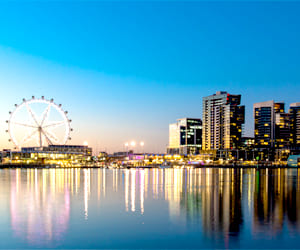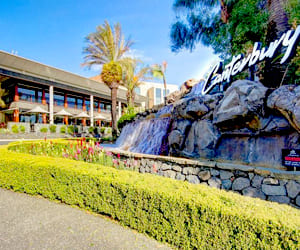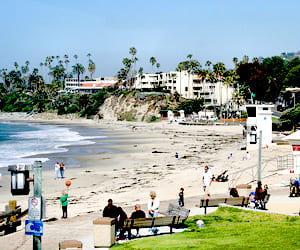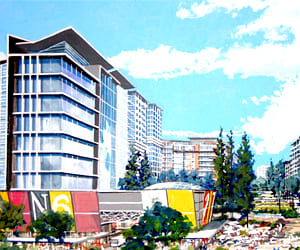How to paint aluminium windows
- 2 pac coatings, 2 pac painting, Aluminium Painting, Aluminium window painting service, Commercial Painters Gold Coast, Commercial Painting, Gold Coast Painter, Painters, Painters Gold Coast, Painters in Gold Coast QLD, Painters near me
- 2 pac coatings, 2 pac painting, 2pac, 2pac windows painting, airless, aluminium colour change, aluminium security screen painting, aluminium spray painting, Window Painting Services, window screen painting
The Complete Professional Step-by-Step Process for the Gold Coast
Painting aluminium windows is a highly technical task that, when done correctly, transforms the entire appearance of a property. On the Gold Coast, where modernising homes in areas like Robina, Mudgeeraba, Palm Beach, Burleigh Waters, and Hope Island is a growing trend, more homeowners are turning to repainting instead of replacing aluminium frames.
Whether you’re refreshing faded powder coat or upgrading from outdated tones like bronze or primrose, this guide breaks down the exact technical process we follow — no cutting corners, no generic advice — just a reliable, high-performance system developed and proven across thousands of jobs.
Why a Proper System Matters
Aluminium isn’t just another surface. It’s a low-surface-energy (LSE) material that resists adhesion, making preparation absolutely critical. The humid subtropical climate of the Gold Coast also means UV exposure, salt air, and moisture must all be considered. Using a proper method ensures long-term adhesion, fade resistance, and professional results that stand up to local conditions.
Step 1: Client Consultation and Assessment
Before we touch a single window, we assess:
Type and number of windows (single, double, bay, sliders) Whether the property is single or double storey Presence of flyscreens or security screens Existing condition of powder coat Colour change direction (e.g. bronze to black vs primrose to white)
We also gather photos and details through our online quoting system — commonly used by customers in suburbs like Varsity Lakes, Southport, and Mermaid Waters — to provide accurate quotes before the job begins.
Step 2: Preparation Area Setup
The work zone is carefully prepared:
Floors, walls, and gardens are protected with drop sheets and plastic film Masking stations are set up for flyscreens and security screens HVLP or airless spraying equipment is calibrated depending on the job size
Preparation is especially critical in coastal suburbs like Currumbin, Miami, or Paradise Point where winds and salt air can introduce airborne contaminants.
Step 3: Screen Removal (If Required)
Many painters skip this step. We don’t.
Security screens and flyscreens are carefully removed to expose the full aluminium frame. In some cases, frames may have been installed with tight tolerances — particularly in older homes in Broadbeach Waters or Ashmore — which requires strategic removal and even reseating of frames after painting.
Each screen is labelled and stored for respraying or re-meshing later.
Step 4: Surface Cleaning — Grease & Silicone Removal
A two-stage cleaning process begins:
Stage 1: Wax, grease, and silicone removal using lint-free cloths Stage 2: Rinse and wipe with clean water to remove residual contaminants
This is vital. You can’t achieve good adhesion without fully eliminating silicone residue, especially near window seals. Oversights at this step are the #1 reason amateur jobs fail.
Step 5: Mechanical Abrasion — Hand and Orbital Sanding
We don’t rely on scuff pads alone. Frames are:
Machine sanded with orbital sanders to remove oxidation and gloss Hand sanded in corners, reveals, and around mitres Sanding is done with specific grits depending on the condition of the substrate
You’ll often see black oxide come off older frames — especially in places like Elanora and Benowa where UV exposure has worn the finish. Sanding ensures the primer bonds to clean, keyed metal, not chalky powder coat.
Step 6: Dust Removal — Blowdown and Wipe
After sanding, all surfaces are:
Compressed air blown to remove dust from reveals and sill edges Wiped with microfibre cloths or tack rags to remove particles and static
We repeat this more than once. The tiniest dust left behind can cause visible imperfections in high-gloss top coats.
Step 7: Full Mask-Up — The Detail Work
This separates professionals from the rest.
We use:
Painter’s masking tape (often green edge-lock) Low-tack tape for internal seals Plastic sheeting for glass Tape tricks for rounded corners, mitred joints, and hard-to-access head rails
The aim? No overspray. No shortcuts. Clean tape lines.
This includes taping off black window rubbers — which many painters skip entirely, falsely claiming “black hides the overspray.” On close inspection, you’ll always see the difference between masked and unmasked work.
Step 8: Primer Application — Thin, Even, Strategic
Priming is done in thin, even passes with careful attention to:
Dry film thickness Coverage of exposed aluminium and sanded edges Colour shift needs (e.g. when going from bronze to white)
We do not flood the surface with primer — we build it correctly, allowing flash-off between coats if needed. Even in high-humidity zones like Coomera or Runaway Bay, this step is managed carefully to prevent trapping moisture under the film.
Primers are chosen specifically for their ability to bond to LSE substrates. They also support flexibility and UV resistance for exterior exposure.
Step 9: Top Coat Spraying — 2 to 4 Coats
Once primed, we begin spraying the finish coats using HVLP or airless spray equipment. Here’s how we approach it:
Number of Coats: Never just one. Typically 2 to 4 coats depending on colour opacity and coverage Drying Between Coats: Allow sufficient flash-off before re-coating Spray Technique: Cross-hatch technique for even build with no stripes or misses
For example, black typically requires 2–3 coats for full depth, whereas white or metallics often need 3–4 coats to achieve uniform coverage — especially over darker primers.
Spraying is done in controlled passes, maintaining the correct distance and overlap. Gloss levels are monitored and consistent across all windows. Even tricky access jobs in places like Tallai or Highland Park are handled with precision.
Step 10: Tack-Free and Initial Dry Time
Before removing masking, we allow the final coat to:
Set to a tack-free condition Self-level for a uniform finish Avoid fingerprints or peel-back issues
We test this manually before moving to the next stage. In warm Gold Coast weather, this can happen quickly — but we never rush it.
Step 11: Tape Pull and Reveal
Tape is removed using a specific method to avoid paint pull:
Pulled back at 45° angles, not straight out Edges are sliced with blades if needed near seals All masking is bagged and removed from site
The moment of truth — crisp tape lines, no overspray, and a perfect edge where frame meets glass. We take particular pride in this finish and often share these tape-pull reveals with clients across Burleigh Heads, Reedy Creek, and beyond.
Step 12: Screen Respray (If Applicable)
Security screens and flyscreens are:
Sanded Cleaned Primed and sprayed to match the frames
Flyscreen mesh is reinstalled or re-meshed after drying. This results in a consistent colour scheme from every angle — no mismatched screens.
Step 13: Final Clean, Client Walkthrough, and Warranty
We finish with:
A full site tidy and vacuum if needed Removal of all tape fragments and waste A detailed walkthrough with the client Warranty and care instructions provided
Clients are shown close-ups of the results and care tips to extend the life of the new finish — whether in Labrador, Pimpama, or Tweed-adjacent areas.
FAQs from Real Clients Across the Gold Coast
Q: Can you paint windows in a two-storey home?
Absolutely. We use scaffolding or access equipment when needed, always ensuring full compliance with safety and insurance requirements.
Q: Does the paint last in full sun?
Yes — provided the surface is cleaned, sanded, and primed correctly. We’ve revisited jobs 8+ years later and the finish is still intact.
Q: Can I stay home during the job?
Yes, but it’s often best to be outside or out for the day during spraying. Most of the odour dissipates quickly, especially in warm coastal air.
Q: Do you remove and reinstall the screens?
Yes. We do not cut corners. Screens are removed, sprayed properly, and returned looking like new.
Final Thoughts — Quality In, Quality Out
Repainting aluminium windows isn’t just about spraying on colour — it’s a layered system of preparation, bonding, and precision.
It’s this meticulous approach that gives homeowners from Oxenford to Coolangatta stunning results that last. Whether it’s a rental refresh, a full renovation, or a simple colour update, this system delivers a professional finish that rivals new installation — without the price tag.
See the Process in Action
Follow us on Facebook or Instagram to see videos of this process on real Gold Coast homes, including before and after shots, tape removal moments, and screen transformations.

Stephen Lockyer
Professional painters and Decorators on the Gold Coast. Serving all your interior and exterior painting needs.
Social Share











































































































































































